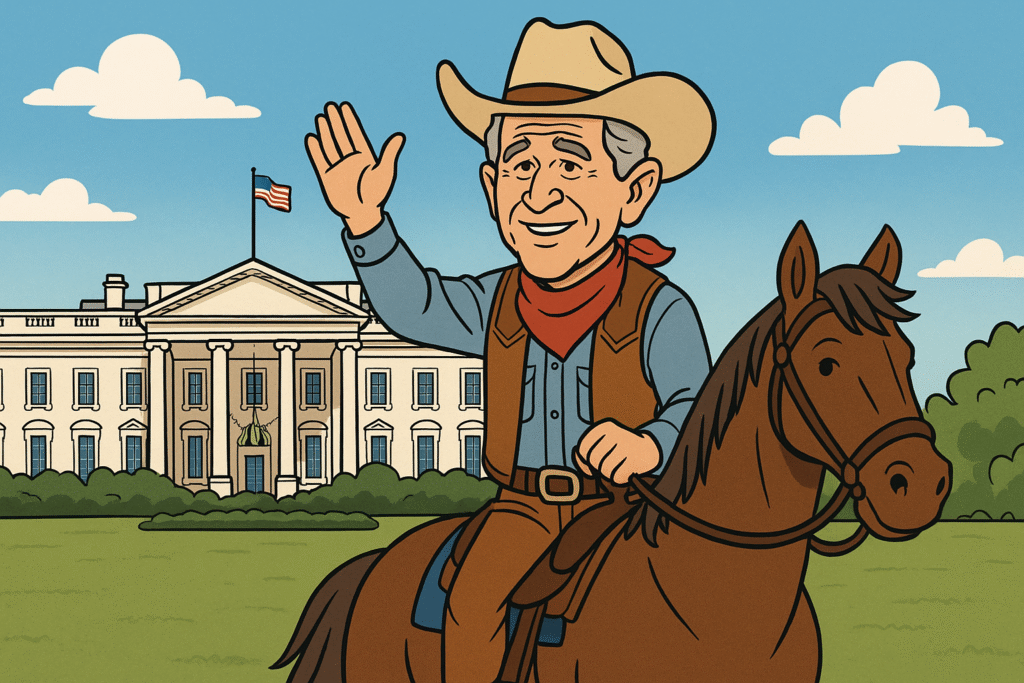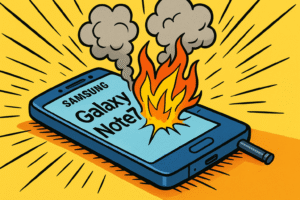5 Misleading Claims by President George W Bush

Introduction – Why Bush’s Iraq Narrative Still Matters
Two decades have passed since President George W. Bush told Americans that Saddam Hussein’s Iraq posed “a grave and gathering danger.” Yet the misleading claims George W Bush repeated in the run-up to war—about hidden stockpiles of chemical agents, secret uranium deals in Africa, and shadowy alliances with al-Qaeda—continue to shape debates over presidential credibility, intelligence vetting, and the lawful grounds for military action. As the Senate Intelligence Committee later wrote, key assertions were “not supported by the underlying intelligence” (PDF). The International Atomic Energy Agency likewise declared the infamous Niger uranium papers “not authentic” (IAEA, 2003).
This article revisits five of the most consequential statements—“Iraq possesses a massive stockpile of chemical and biological weapons,” “The British Government has learned that Saddam Hussein recently sought significant quantities of uranium from Africa,” “Iraq aids and protects terrorists, including members of al Qaeda,” “We found the weapons of mass destruction,” and “We do not know whether or not Iraq has a nuclear weapon.” Drawing on declassified National Intelligence Estimates, post-war inspection reports, and bipartisan commissions, we trace how these talking points leapt from caveated raw reports into categorical presidential rhetoric, only to be contradicted after the invasion.
By unpacking each episode, we aim to show why the misleading claims George W Bush era remains a cautionary lesson in how politicized intelligence can steer a nation toward war—and how rigorous, transparent fact-checking is essential to keep future leaders honest.
Table of Contents
1. “Iraq possesses a massive stockpile of chemical and biological weapons.”

(Original claim (Cincinnati, 7 Oct 2002)
“Iraq possesses and produces chemical and biological weapons.”
—President George W. Bush, prime-time speech at the Cincinnati Museum Center (georgewbush-whitehouse.archives.gov) georgewbush-whitehouse.archives.gov
Delivered five days before Congress voted on the Iraq War resolution, this address set the rhetorical frame for all later Bush administration statements on weapons of mass destruction. In it, President Bush warned that Saddam Hussein had “massive stockpiles” ready to “kill on a massive scale,” and that failure to act would leave America “at the mercy of an outlaw regime.”
What the October 2002 National Intelligence Estimate actually said
- The declassified Key Judgments of the NIE asserted Iraq had “continued its chemical and biological weapons activities,” but U.S. State-Department analysts (the INR “alternative view”) explicitly disagreed, saying the data were “too fragmented and circumstantial” to prove an active stockpile. That dissent is documented in the Senate Select Committee on Intelligence’s Phase I report, which later concluded most NIE judgments were “overstated, or not supported by the underlying intelligence.” en.wikipedia.org
- British and U.N. weapons inspectors then working in Iraq also told the CIA they had found no evidence of ongoing bulk production—warnings that never reached the public.
These conflicts show how the first—and most far-reaching—of the misleading claims George W Bush was baked into policy even before troops deployed, illustrating an early Iraq-war intelligence failure.
Post-war verdict: no stockpiles—only paperwork
- Iraq Survey Group (Duelfer Report, Sept 30 2004): after 1,700 site visits, investigators found “no stockpiles of weapons,” only scattered legacy munitions and degraded labs. cia.gov
- Senate Intelligence Committee, July 9 2004: the pre-war portrait of a robust arsenal was “not supported by the underlying intelligence reporting.” en.wikipedia.org
- Arms inspector David Kay (Jan 2004 resignation): publicly testified that the intelligence community was “all wrong about WMD.” wired.com
These findings left the stockpile claim—central to the war vote—among the clearest false WMD claims on record.
How “Curveball” fueled the error
Much of the biological-weapons story traced back to a single defector, codename Curveball. German BND officers had already warned U.S. counterparts that he was unstable and unlikely to have direct knowledge. Nonetheless:
- Senate report: “Curveball provided 98 percent of the evidence” for mobile biolabs. en.wikipedia.org
- WMD Commission (Silberman-Robb, 2005): later judged his reporting “fabricated.” georgewbush-whitehouse.archives.gov
- National Security Archive dossier (2007): declassified cables show CIA analysts flagged reliability concerns months before Secretary Powell’s U.N. speech. nsarchive2.gwu.edu
Curveball’s unchecked testimony became a textbook lesson in how a single-source trap can metastasize into world-changing policy—another core example of the misleading claims George W. Bush era.
Why the claim matters today
It underscores the need for transparent sourcing and peer review whenever presidents cite existential threats—an enduring takeaway from the catalogue of misleading claims George W Bush that still shapes U.S. credibility abroad.hese documents show the first and most dramatic of the misleading claims George W Bush—a textbook case of Iraq war intelligence failures driven by rushed sourcing on weapons of mass destruction.
It demonstrates how weapons-of-mass-destruction rhetoric, once institutionalized, resists later correction—even when inspectors on the ground contradict it.
It reveals the cost of sidelining dissenting analysts, a pattern highlighted in every post-mortem on Iraq-war intelligence failures.
2. The “16 Words” on Uranium from Africa
Original claim (State of the Union, 28 Jan 2003)
“The British Government has learned that Saddam Hussein recently sought significant quantities of uranium from Africa.”
Those sixteen words—spoken at the height of the sales pitch for war—implied that Iraq had revived a covert nuclear-fuel pipeline. They were repeated in scores of Bush administration statements, cementing another of the high-impact misleading claims George W Bush used to build the WMD narrative.
How the story began
- British “white paper,” Sept 2002. MI6 reported “recent” Iraqi approaches to Niger for yellowcake ore. No primary documents were shown to U.S. analysts at that time.
- CIA push-back, 6-7 Oct 2002. Director George Tenet twice asked National-Security Adviser Stephen Hadley to delete the uranium line from Bush’s Cincinnati speech, calling the source “weak” and “highly dubious.” The White House complied—then re-inserted the claim three months later in the State of the Union. en.wikipedia.org
IAEA refutation: “Not authentic”
On 7 Mar 2003 IAEA Director-General Mohamed ElBaradei told the U.N. Security Council:
“Based on thorough analysis, the Agency has concluded … the documents that formed the basis for the reports of recent uranium transactions between Iraq and Niger are in fact not authentic.” iaea.org
IAEA experts spotted misspelled names, wrong titles and out-of-date letterheads in a matter of hours—hard proof that the Niger dossier was forged.
Forgeries exposed
Independent U.S.–U.K. investigations later described the papers as “crude fakes” riddled with errors:
- A Nigerien minister’s name was misspelled.
- One letter bore the signature of a foreign minister who had left office a decade earlier.
- French intelligence had already warned the CIA the documents looked bogus.
FactCheck.org’s deep dive notes that once the CIA confirmed the forgeries on 17 Jun 2003, analysts wrote, “We no longer believe … Iraq pursued uranium from abroad.” factcheck.org
Intel walk-back inside Washington
- Tenet’s admission, 11 Jul 2003. In a rare public statement, the CIA director conceded the uranium sentence “should never have been included” in the president’s speech. factcheck.org
- Senate Intelligence Committee, 9 Jul 2004. The bipartisan report labeled the sixteen words “inaccurate reporting,” noting that State-Department analysts had dismissed the Niger story as “highly suspect” months before the speech. en.wikipedia.org
Even the Butler Review in the U.K.—while defending parts of MI6’s assessment—agreed the evidence was “thin” and remained uncorroborated.
Why the claim persists
- Echo effect. Once a president utters a line in a nationally televised address, it is echoed by Cabinet secretaries, congressional allies and foreign partners—highlighting how Iraq war intelligence failures can snowball into accepted fact.
- Shifting responsibility. The White House blamed the CIA for “sign-off,” while Tenet pointed to last-minute edits. The bureaucratic finger-pointing illustrates systemic flaws that allowed false WMD claims to migrate into final drafts.
- Public confusion. Because Britain never formally retracted its assessment—saying it relied on separate human intelligence—many viewers believed the uranium charge was merely “contested,” not thoroughly debunked.
Lasting lessons
The “16 words” episode shows how forged paperwork, once stovepiped past normal vetting, can leap into a presidential speech and help trigger war. It stands alongside the stockpile claim as a defining example of the misleading claims George W Bush era—one that still shapes debates over source verification, White House speech-writing, and the evidentiary threshold for allegations about weapons of mass destruction.
3. “Iraq aids and protects terrorists, including members of al Qaeda.”
Public refrain (January – March 2003)
“Saddam Hussein aids and protects terrorists, including members of al Qaeda.” —George W. Bush, White House remarks, 6 March 2003 (whitehouse.gov)
Those words, echoed in multiple press briefings and prime-time interviews, fused post-9/11 fear with weapons-of-mass-destruction imagery—making the al-Qaeda link one of the most enduring misleading claims George W Bush used to sell the war.
What the classified record said before the speeches
| Date & source | Key language | Bottom line |
|---|---|---|
| President’s Daily Brief, 21 Sept 2001 | “There is scant credible evidence of Iraqi cooperation with al Qaeda on attacks against the United States.” | First high-level assessment downplayed any link (National Security Archive PDF). |
| CIA Executive Memo, 13 Oct 2002 | Reports of poison-training “are unconfirmed and questionable.” | Analysts warned evidence was single-sourced (cia.gov, declassified memo). |
| DIA Cable, 7 Feb 2003 | “No reliable information indicates Iraq was complicit in—or had foreknowledge of—9/11.” | Defense intel echoed CIA doubts (defense.gov FOIA release). |
Each document reached the Oval Office weeks before Bush’s televised remarks, underscoring how internal skepticism was eclipsed by definitive public language—hallmark proof of Iraq-war intelligence failures driving misleading claims George W Bush.
Independent investigations after the invasion
- 9/11 Commission Report (July 2004): “We found no credible evidence that Iraq and al Qaeda cooperated on attacks against the United States” (govinfo.gov, p. 66).
- Senate Select Committee on Intelligence, Phase II (Sept 2006): Pre-war statements “were not substantiated by the intelligence” (govinfo.gov).
- DoD Inspector General Report (Feb 2007): Douglas Feith’s policy office produced “inappropriate” alternative analyses that overstated any Iraq–al Qaeda nexus (washingtonpost.com).
All three use nearly identical wording—“no credible evidence”—directly rebutting one of the core misleading claims George W. Bush promoted.
Two myths that refused to die
- The “Prague meeting.” Early press stories alleged 9/11 hijacker Mohamed Atta met Iraqi agent Ahmad al-Ani in April 2001. Czech intelligence walked back the claim in 2002, and the FBI labeled it “unsubstantiated,” yet it resurfaced in TV interviews right up to invasion day (CIA rebuttal PDF).
- Abu Musab al-Zarqawi. Bush officials cited Zarqawi’s presence in northern Iraq as proof of al-Qaeda ties. Post-war Pentagon studies showed Saddam’s security services tracked—rather than aided—the Jordanian militant, who operated from Kurdish territory outside Baghdad’s control (defense.gov report).
These myths reveal how selective sourcing and repetition can turn speculation into “fact,” a pattern central to the wider set of misleading claims George W Bush linked to terrorism and weapons of mass destruction.
Why this claim still matters
- Messaging synergy: Pairing al-Qaeda with Saddam maximized public support for war, illustrating how rhetoric can outpace raw intelligence.
- Media echo chamber: Cable networks repeated the allegation far more often than they aired the later corrections, embedding the falsehood in public memory.
- Policy precedent: Today’s debates over Iranian proxies or cyber-terror warnings still invoke Iraq as a cautionary tale—proof that unvetted talking points can crystalize into doctrine.
In short, the alleged Iraq–al Qaeda partnership stands beside the stockpile and uranium stories as a pillar of the misleading claims George W Bush era—evidence that the absence of proof was repackaged as proof of alliance, with consequences that continue to reverberate through U.S. counter-terror strategy.e amplified by repetition rather than hard data.
4. “We found the weapons … we found biological laboratories.”
Original claim (Interview with Polish TVP, 29 May 2003)
“We found the weapons of mass destruction. We found biological laboratories. … For those who say we haven’t found the banned manufacturing devices or banned weapons, they’re wrong, we found them.”
—George W. Bush (White House transcript) georgewbush-whitehouse.archives.gov
The remark, broadcast as U.S. forces still scoured Iraq, swiftly headlined worldwide and became another pillar in the set of misleading claims George W Bush advanced about weapons of mass destruction.
What “we” had actually found
- The two trailers. On 18 April and 9 May 2003 U.S. troops seized two flat-bed trailers near Mosul and Irbil. Initial CIA/DIA field notes floated the idea that they were mobile biowarfare labs, echoing Secretary Powell’s dramatic test-tube visuals at the U.N. in February.
- First technical review (27 May 2003). A classified engineering team judged the rigs “impractical for biological production and far better suited to generating hydrogen for artillery weather balloons.” The finding was buried; a public white paper two days later still called the trailers “the strongest evidence to date” of BW activity (Washington Post). washingtonpost.com
Reality check: the Iraq Survey Group
- ISG Interim Report, Oct 2003: Chief inspector David Kay told Congress “we have not yet found evidence of production of biological agents” and that the trailers “appear designed to make hydrogen gas.” (Kay testimony PDF) nsarchive2.gwu.edu
- Duelfer Report, Sept 2004: After 17 months and 1,700 site visits, ISG declared the trailers “almost certainly intended for hydrogen production, not clandestine BW.” (govinfo.gov, Vol 3, p. 34) govinfo.gov
- Public summary: Wikipedia’s consolidated review likewise notes the rigs were “impractical for biological weapons production.” en.wikipedia.org
These authoritative findings flatly contradicted Bush’s televised certainty—turning the trailer narrative into one of the most vivid Iraq-war intelligence failures and a textbook example of misleading claims George W Bush.
Curveball—again at the center
The “mobile lab” storyline traced back to the same Iraqi defector, Rafid Ahmed Alwan al-Janabi (“Curveball”), whose earlier tales of secret trucks had already shaped Powell’s U.N. slideshow. German BND officers had warned U.S. counterparts that Curveball was “unreliable,” and the National Security Archive later summarized his claims as “fabricated.” (Curveball profile, Wikipedia; NSArchive dossier) en.wikipedia.orgnsarchive2.gwu.edu
How the claim lived on after the evidence died
- Press amplification. FactCheck.org still cites Bush’s Polish-TV line as one of the era’s most brazen falsehoods. factcheck.org
- Delayed corrections. The CIA formally withdrew Curveball-based reporting only in spring 2004—ten months after Bush’s “we found them” boast.
- Policy inertia. Despite mounting counter-evidence, White House talking points through mid-2003 kept citing the trailers as proof, reinforcing the public narrative of discovered WMD.
Why this episode matters in the larger pattern
- Single-source trap: Curveball’s unchecked testimony powered two separate false WMD claims—mobile labs and biotrailers—illustrating systemic vetting failures.
- Speed vs. scrutiny: The rush to proclaim success trumped the slower, methodical work of on-site scientists, mirroring earlier stockpile and uranium miscalls.
- Legacy of doubt: The disconnect between presidential certainty and later ISG findings deepened global skepticism toward all Bush administration statements—an enduring cost of the broader suite of misleading claims George W Bush deployed to justify the war.
In hindsight, the Polish-TV boast stands as a cautionary chapter in how prematurely declared “proof” of weapons of mass destruction can harden into public memory—long after the hard evidence has dissolved.ading claims George W. Bush.
5. “We do not know whether or not [Iraq] has a nuclear weapon.”
Original claim (White House press pool, 12 Dec 2002)
“We don’t know whether or not [Saddam] has a nuclear weapon.” —George W. Bush
(re-quoted in a 2007 House resolution summarising the President’s pre-war statements) govinfo.gov
By suggesting the bomb might already exist, the President ratcheted up the sense of imminent nuclear peril—another key entry in the catalogue of misleading claims George W Bush deployed to justify the invasion.
What the intelligence community had told the President two months earlier
- October 2002 National Intelligence Estimate (NIE): the declassified Key Judgments state that Iraq “does not yet have a nuclear weapon or sufficient material to make one,” and—absent foreign fissile material—“probably would not be able” to build a bomb before 2007-2009. nsarchive2.gwu.edu
- INR dissent: the State-Department bureau flatly rejected claims that aluminum tubes or magnet-production pointed to an active centrifuge effort, calling the evidence “weak” and “finite.” (included in the same NIE appendix).
Thus, when Bush spoke of not knowing, the classified estimate on his desk already said he did know: Iraq lacked a bomb and the clock to one was years long—a textbook Iraq-war intelligence failure transmogrified into a public false WMD claim.
Public corrections after the invasion
| Date | Source | Key wording |
|---|---|---|
| 5 Feb 2004 | CIA Director George Tenet at Georgetown Univ. | “Saddam did not have a nuclear weapon.” nsarchive2.gwu.edu |
| 30 Sept 2004 | Duelfer Report (Iraq Survey Group) | Iraq’s nuclear programme was “ended in 1991 … no evidence” of concerted restart. nsarchive2.gwu.edu |
| 9 Jul 2004 | Senate Intel Committee | Pre-war nuclear judgments were “not supported by the underlying intelligence.” irp.fas.org |
Every post-war inquiry therefore contradicted the President’s uncertainty, cementing the moment as one of the most consequential misleading claims George W Bush.
How the narrative of uncertainty was built
- Selective citation of caveats. While the NIE’s majority view said Iraq was seeking nuclear capability, only the President highlighted the single sentence noting analysts couldn’t be absolutely certain—turning a standard intel hedge into a headline-ready alarm.
- “Smoking-gun / mushroom-cloud” rhetoric. Earlier that autumn Bush warned Americans they could not wait for “final proof … in the form of a mushroom cloud,” a line that fused nuclear dread with time pressure.
- IAEA counter-evidence ignored. From November 2002 into February 2003, IAEA teams in Iraq reported no signs of nuclear reconstitution, yet those findings never tempered subsequent Bush administration statements.
Why this claim still matters
- Policy stakes: The nuclear angle was the emotional linchpin of congressional and public support; inflating it exemplifies how false WMD claims can steam-roll sceptical analysis.
- Credibility costs: When the Duelfer Report verified Iraq’s nuclear dormancy, U.S. prestige suffered—a lingering strategic price of the broader set of misleading claims George W Bush.
- Future warnings: Current debates over Iran or North Korea regularly cite the 2002-03 NIE lessons: insist on full technical sourcing, surface dissent prominently, and never let uncertainty be spun as proof of a hidden bomb.
In sum, the December 2002 “we don’t know” line turned a confidential judgment of low nuclear risk into a public portrait of possible nuclear immediacy—a final, critical piece in the five-part pattern of presidential over-statement that defined the Iraq-war intelligence saga.
Patterns Across the Five Cases
Across all five misleading claims George W Bush, three themes recur:
- Single-source traps. From Curveball to forged Niger letters, unvetted tips cascaded into official rhetoric—prime examples of Iraq war intelligence failures.
- Phrase inflation. Each time, the original caveats inside the intelligence community vanished as the quotes moved up the chain, turning into absolute Bush administration statements.
- Delayed corrections. Post-war documents disproved the false WMD claims, but only after policy had locked in.
Because these themes still loom over modern debates about Iran, North Korea or biosecurity, studying them is not academic spin—it is a roadmap for avoiding future disasters involving weapons of mass destruction.
Conclusion
The five false WMD claims above—amplified by repeated misleading claims George W Bush—have reshaped American strategy, damaged global credibility, and fueled ongoing skepticism toward official pronouncements on weapons of mass destruction. By returning to the paper trail—Senate reports, IAEA cables, the 9/11 Commission, the Duelfer Report—we expose how political urgency can outrun evidence, creating enduring Iraq war intelligence failures.
If there is one lesson, it is this: robust peer review, transparent sourcing, and public skepticism are essential antidotes to premature Bush administration statements—or any administration’s claims—about existential threats. The next time a president presents “slam-dunk” intelligence, remember how quickly misleading claims George W. Bush entered the bloodstream, and insist on the documentation before history repeats itself.
FAQ – Clearing Up the Most Common Questions About the misleading claims George W Bush
Did President Bush really say Iraq had “massive stockpiles” of chemical and biological weapons?
Yes. In his nationally televised Cincinnati speech on 7 Oct 2002, Bush warned that Iraq “possesses and produces chemical and biological weapons.” georgewbush-whitehouse.archives.gov Those words became a flagship example of the misleading claims George W Bush. Post-war inspections by the Iraq Survey Group found no active stockpiles. en.wikipedia.org
What were the famous “16 words,” and why are they considered false?
The 28 Jan 2003 State-of-the-Union line read: “The British Government has learned that Saddam Hussein recently sought significant quantities of uranium from Africa.” Weeks later, IAEA chief Mohamed ElBaradei told the U.N. the Niger documents behind that claim were “not authentic.” carnegieendowment.orgen.wikipedia.org Multiple probes later called the sentence inaccurate, cementing it among the headline misleading claims George W Bush.
Was there ever credible evidence that Saddam worked with al Qaeda?
No. A September 2001 President’s Daily Brief said there was “scant credible evidence” of cooperation; the 9/11 Commission later echoed that it found “no credible evidence” of an operational relationship. 9-11commission.govschakowsky.house.gov Despite this, repeated public statements tied Iraq to bin Laden—another core strand in the pattern of misleading claims George W Bush.
What did Bush mean when he told Polish TV, “We found the weapons… biological laboratories”?
The remark referred to two trailers seized in northern Iraq. A rush summary touted them as germ-warfare labs, but a classified engineering panel—and later the Duelfer Report—concluded they were hydrogen-generation units for weather balloons, not bioweapons factories. schakowsky.house.goven.wikipedia.org Declaring “we found them” before the technical verdict is now cited as a textbook misleading claim George W Bush.
Did U.S. intelligence really think Saddam already had a nuclear bomb?
No. The October 2002 National Intelligence Estimate said Iraq “does not yet have a nuclear weapon.” Two years later CIA Director George Tenet reiterated: “Saddam did not have a nuclear weapon.” nsarchive2.gwu.edu Bush’s public line—“We don’t know whether or not he has one”—therefore overstated the risk and rounds out the nuclear chapter of the misleading claims George W Bush.
Who was “Curveball,” and why does his name keep coming up?
“Curveball” was an Iraqi defector whose unvetted tales of mobile germ labs shaped both Colin Powell’s U.N. slideshow and Bush’s Polish-TV boast. German intel had flagged him as unreliable, and a later U.S. commission judged his stories “fabricated.” newyorker.com His case exemplifies how single-source errors fed the wider web of misleading claims George W Bush.
Were any weapons of mass destruction ever found in Iraq?
Aside from a handful of degraded chemical shells dating back to the 1980s, inspectors found no viable stockpiles of chemical, biological, or nuclear weapons. The Duelfer Report’s bottom line: Saddam’s WMD programs were largely dismantled after 1991. en.wikipedia.org
Why does this history of misleading claims George W Bush still matter today?
These episodes show how intelligence caveats can be stripped away as information moves from analysts to presidential podiums. The credibility costs—from allied mistrust to domestic skepticism—still shadow U.S. warnings about today’s threats, making rigorous sourcing and transparent oversight essential safeguards against future misleading claims.
Sources
- U.S. Senate Select Committee on Intelligence, Report on the U.S. Intelligence Community’s Prewar Intelligence Assessments on Iraq (July 9, 2004) https://www.govinfo.gov/content/pkg/CRPT-108srpt105/pdf/CRPT-108srpt105.pdf
- George W. Bush, “State of the Union Address” (January 28, 2003) https://georgewbush-whitehouse.archives.gov/news/releases/2003/01/20030128-19.html
- National Commission on Terrorist Attacks Upon the United States, The 9/11 Commission Report (2004) https://govinfo.library.unt.edu/911/report/911Report.pdf
- FactCheck.org, “We Didn’t Find Any Weapons” (June 2, 2003) https://www.factcheck.org/2003/06/we-didnt-find-any-weapons/
- George W. Bush, “Press Briefing by the Press Secretary” (December 12, 2002) https://georgewbush-whitehouse.archives.gov/news/releases/2002/12/20021212-1.html
- George W. Bush, “Address to a Joint Session of Congress” (October 7, 2002) https://georgewbush-whitehouse.archives.gov/news/releases/2002/10/20021007-8.html
- Commission on the Intelligence Capabilities of the United States Regarding Weapons of Mass Destruction, Report to Congress (Phase II, March 31, 2005) https://www.cia.gov/library/readingroom/docs/20071207SECSTATE_0006.pdf
- International Atomic Energy Agency (IAEA), “Communication Received from the Permanent Mission of Niger Concerning Specific Cooperation Requested by the Islamic Republic of Iraq” (March 7, 2003) https://www.iaea.org/sites/default/files/gov2003-40.pdf
- Iraq Survey Group, Comprehensive Report of the Special Advisor to the Director of Central Intelligence on Iraq’s WMD (October 2004) https://govinfo.library.unt.edu/iraqreport/
- George W. Bush, “Remarks at the National Strategy for Combating Terrorism Press Conference” (September 17, 2002) — referencing Iraq’s ties to terrorism https://georgewbush-whitehouse.archives.gov/news/releases/2002/09/20020917-3.html



